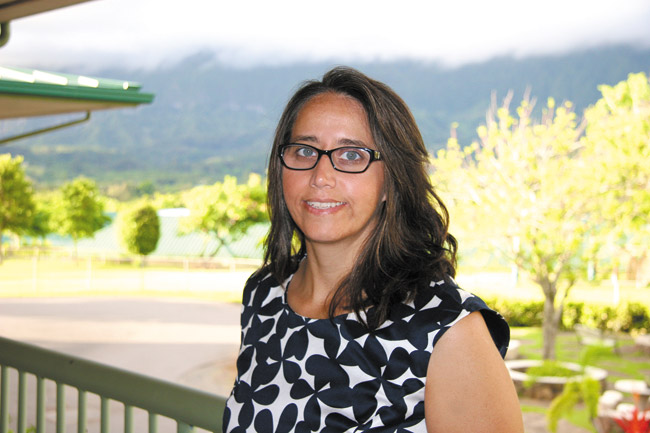Makakilo Educator Understands How Important STEM Can Be

Le Jardin Academy science teacher Brianna Roberts of Makakilo participated in the August Siemens STEM Institute in Washington, D.C. this summer. Photo courtesy Le Jardin Academy.
When the topic of education comes up, the word “STEM” gets thrown around — the push for a bigger emphasis on science, technology, engineering and math-related topics in the classroom.
It’s a worldwide initiative, and it’s something Le Jardin Academy teacher Brianna Roberts knows well.
“We are losing so many jobs in the United States. People are not going into STEM education any more. A lot of students are really afraid of these careers,” Roberts said.
With these concerns in mind, Roberts participated in the August Siemens STEM Institute in Washington, D.C., where a gathering of 50 science teachers from around the nation shared strategies to promote STEM education.
Roberts, a Makakilo resident who teaches junior and seniors physics and environmental systems, stumbled upon the opportunity when she was browsing the Discovery Channel website earlier this year.
At the workshop, the fellows toured the Smithsonian and heard from a variety of speakers, including astrophysicist Hakeem M. Oluseyi, plus representatives from the White House and Discovery Channel.
All of the speakers touched upon a common theme: While students are enthused about STEM subjects in elementary school, they shy away from it past the sixth grade.
“(Educators) want to do something different about that and get students to enjoy science and see there’s an aspect in it that can be fun and interesting, even if math is involved,” Roberts explained.
It’s an attitude shift at its core, pushing teachers away from “talking at” students and instead encouraging their pupils to make the connections themselves.
Roberts gave the example of how typical field trips to museums devolve into regurgitating information off display cards, when the focus should be on getting students to look at the conceptual details to work out the real-life implications of exhibits.
In her classroom, Roberts likes to use a quiz game called Kahoot!
She writes her own questions, and the entire class participates in answering them.
The program allows Roberts to see, in real-time, how everyone is doing.
“It’s a fun game, and it gets them actively engaged — all the students, instead of just one or two students,” she said.
Roberts will continue to stay in contact with her peers from the Institute to exchange resources, and she hopes the lessons she has learned from the experience will help her students gain more confidence.
“What (the institute) was telling us, along with what we do already as educators, it’s really important for kids to try to bring in many aspects of science and technology education,” Roberts said. “Let them bring you where they want to go, and maybe ask them more questions, instead of you just telling them what to do as a teacher.”





